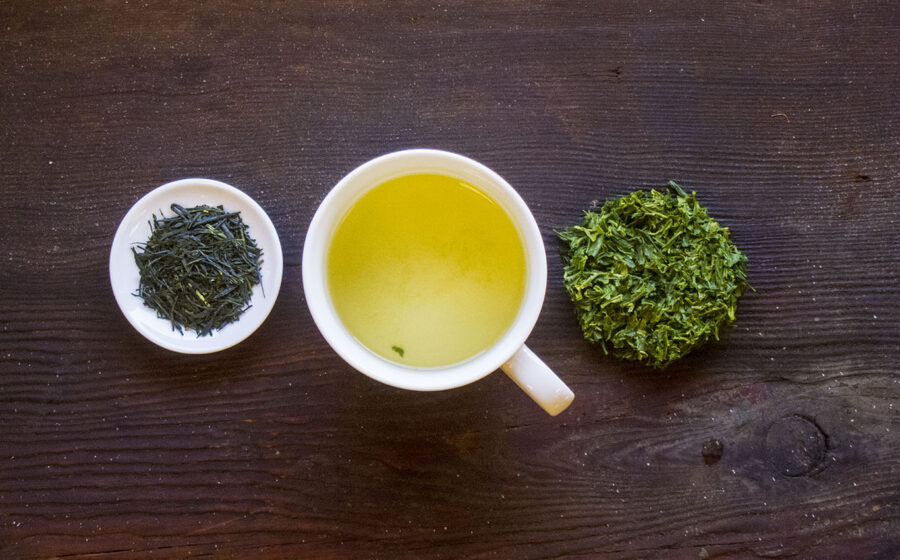[E]arly spring in Japan yields the brisk harvest of herbaceous green shincha, or new tea. This first picking is also sometimes called a first flush, as with the early spring-picked teas of India that we discussed in Fresh Cup’s April issue, but refers not just to the time of harvest but to the small, tender size of the tea leaf. The development of these leaves from shincha to the more familiar sencha, a traditional green tea of fully matured leaf size, can be a speedy transition—often only a few days long. These rare, young shincha leaves are prized, as these harvests are truly limited.
Shincha exhibits the classic Japanese green tea characteristics of deep, grassy flavor but with a gentler mouthfeel and brighter, fresher aroma. The newly awakened leaves offer the most intense expression of the soil’s nutrients, absorbed into the tea bush over a long winter, and result in a catechin- and amino-acid-rich cup. Look for sweet and umami notes in harmony, dancing in a golden-green liquor.

Culturally, the arrival of shincha each season is a celebration not only of the return of the Japanese tea harvest—and spring!—but of the rare flavors of this particular tea. What’s more, delicate shincha is best harvested by hand, a practice no longer in favor in a country of mechanized, efficient tea-picking methods. You’ll find this early picking perhaps best exemplified in the tea gardens of Shizuoka Prefecture, one of the regions most well known for its shincha. Tea growers in Shizuoka and other suitable climates will react swiftly to shincha-ready tea bushes. Harvesting may take place in one long session, around the clock for a few days, as once the window of harvest has shut, it is over until the following year.
Shincha tea leaves are processed right away after plucking. The first step is steaming the leaves with great care to slow oxidization and preserve the most nuances of flavor possible—which is more difficult than it may sound. The tea is steamed to the producer’s desire and according to factors like the elevation at which the tea was grown, and the condition of the leaves themselves, but rarely for even as long as a full minute. The tea is then dried and rolled to remove all moisture, ending with the flat needle-shaped leaves fine Japanese green teas are known for.
Shincha’s brief harvests may be finished in May or even April, and your tea seller’s canisters should be out by June or July.
Though it’s possible to find or order quality shincha, as a tea with an incredibly short season, you’ll have to act while you can. Its brief harvests may be finished in May or even April, and your tea seller’s canisters should be out by June or July.
Butter-smooth, grassy and lively shincha should be prepared in your gaiwan gong-fu style, at lower temperatures, around 165 Fahrenheit, for two or three short infusions. Note that those who prefer to use a kyusu or strained pot instead of a gaiwan should be mindful (as with many delicate green teas) of the style of shincha they’ve acquired: deeply steamed shincha, known as fukamushi, will be of a finer consistency and may challenge your strainer.
Now that this year’s shincha is on our shelves, it’s truly time to celebrate.
—Liz Clayton is a writer, photographer, and aspiring marmalade chef based in Brooklyn. She is the associate editor of sprudge.com and author of the book Nice Coffee Time.
















